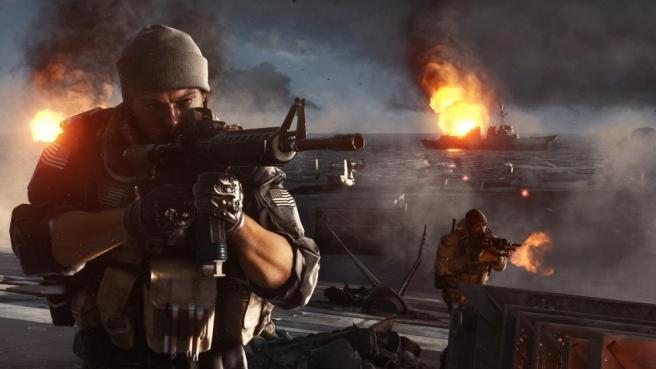How do I pick a Graphics Card?
The graphics card has evolved from just rendering graphics on screen to also having a powerful on-board processor. That’s why you’ll commonly see a graphics card being referred to as a GPU, a Graphical Processing Unit.
Choose a Graphics Card in 5 Steps:
There are many technologies that make a great graphics card and learning how it all works together will help you choose the perfect card for you.
Manufacturers like ASUS, Gigabyte and EVGA produce their own brand of graphics card. They differ from each other in terms of their memory type, speed and bandwidth as well as the heatsinks used.
All these cards are powered by either NVidia or AMD GPU’s. The GPU is responsible for all the mathematical calculations needed to render the pictures you see on your screen and is what drives your graphics experience.
Do you need a separate Graphics card? The processor you’ve already chosen will include a GPU in the processor, all in one chip. Intel calls this integrated graphics and AMD calls this an APU (Accelerated Processing Unit). These are really useful for business and budget PCs that only need things like HD video and general computer use.
Step 1: Look at the GPU first then the brand
NVidia’s current range of GeForce 700 and 900 series and AMD’s Radeon R7 and Radeon R9 series are a good starting point to pick your GPU. Higher model numbers like GT 720 and GTX 950 (NVidia) or 360 and 390 (AMD) indicate newer GPU’s.
AMD’s Radeon R7 and Radeon R9 series and NVidia’s GeForce 700 and 900 series is a good place to start looking for graphics cards
Also look out for the GPU’s clock speed – put simply higher numbers show that the GPU is faster at doing the maths – exactly what you want for drawing graphics to your screen.
Which series and model of GPU you pick will depend on your intended use and the size of your budget.
Step 2: Compare Memory Types, Clock Speeds and Bit Rates
Data ready to be processed by the GPU is held on the graphic card’s own dedicated memory chips called GDDR3 and GDDR5. These chips run at higher clock speeds compared to normal desktop memory.

GDDR5 is newer and faster than GDDR3 because it is able to move more data at higher speeds on the GPU. Data can be transferred 4 times per clock cycle, so to make the numbers look bigger, manufacturer’s list clock speeds at 4x the actual clock speed.
For example, the graphics card I’ll be using for in this build, the 2GB EVGA NVidia GT 740 card is listed as having a memory clock speed of 5000 MHz (sometimes listed as the effective clock speed). The actual clock speed is 1250 MHz (5000 MHz /4), whatever value you use to compare graphics cards make sure you’re using the same value.
More memory is good but more bandwidth is better. Bandwidth is the amount of data that the GPU can access on the memory bus and is listed as the memory bit rate on the graphics card. Standard rates are 64 bit and 128 bits but higher end cards have much higher bit rates.
In summary, the amount of memory on a card is important but also look at the type (GDDR3 or GDDR5), the actual memory clock speed and the memory bit rate (bandwidth – higher is better)
Step 3: Pay attention to the number of CUDA Cores (NVidia) and Shaders (AMD)
The GPU has to work out how to shade 3D objects on screen to show how light affects them to make them look as realistic as possible. Although NVidia and AMD have different names for these technologies, they essentially to the same complex processing tasks.
The more number of CUDA cores or shaders the better the GPU is at rendering great images, this is especially important for gaming where frames per second (FPS) are important or graphics intensive applications.

Are you in the Frame? Think of your favourite cartoon, the images are drawn individually with slight variations between each image (a frame) and then those images are put together in sequence at speed. This ‘tricks’ your eyes into thinking you’re seeing moving images, in other words animated cartoons. If we decrease the speed your eyes will see a lag between the moving images. A graphics card works in the same way – in documents the moving images hardly change but in games the speed of those moving images (the frame rate) is crucial.
Step 4: Look for cooler TDP values
Just like the CPU, the GPU produces heat from all the processing that it does, which is indicated by its TDP value. These values tell us the power needed to keep the GPU at an acceptable temperature, so logically the more power needed the more heat the GPU is producing.
Look for low TDP values so that less cooling systems and fans are required, not only is cooling more costly but makes your computer noisier.
Step 5: Check compatibility and the ports on the card
Graphics cards slot into the motherboard’s PCI Express (PCIe) slots, which communicate with the motherboard’s bus (data channels) at different speeds depending on the version of the slot (2.0 or 3.0) and the width of the slot (x8, x16 or more).
Make sure there are one of these slots available on your motherboard and ideally support the maximum PCIe version and width of the card.
Also make sure that your power supply has a spare and correct power connector for the graphics card (usually an 8 or 4 pin power connector). Double checking the dimensions of the card to make sure it fits into your computer case will also avoid any wrongly ordered cards.
Lastly and most obviously check the ports (HDMI and DVI) on the card itself, the resolutions supported and how many monitors can be plugged in at the same time.
For example, the card I picked has a mini HDMI port and so I knew to order a mini HDMI cable as well.
